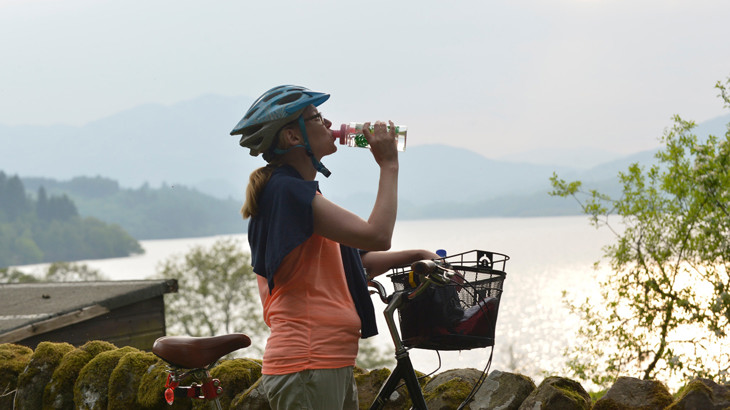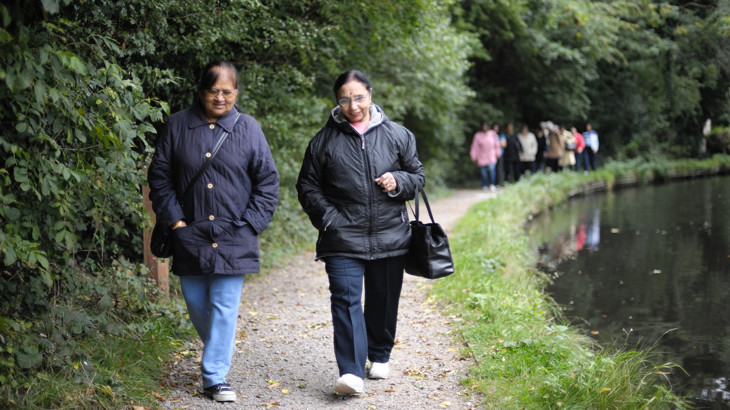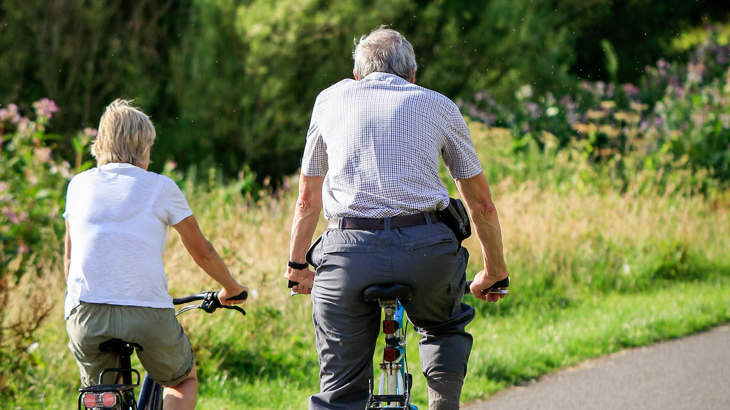The menopause is a natural part of ageing. In the UK, the average age for a woman to reach the menopause is 51 years. Exercise like cycling and walking can help you to manage some of the symptoms you can experience. So we’ve teamed up with Menopause Support to give you all the tips and information you need to keep active.

Research shows that regular exercise like cycling or walking can help you to manage some menopausal symptoms, including the hot flushes.
Women in the UK can experience the menopause between 45 and 55 years of age. But it can happen later for some, and earlier for others.
And 75% of women will experience some menopausal symptoms.
Tip: You can download and use Menopause Support’s handy symptom checker to help you and your doctor decide if you are beginning to go through the menopause.
Put a tick next to all the symptoms you’re experiencing and take it to your doctor’s appointment.
The NHS says that some of these symptoms can be quite severe and have an impact on our usual daily activities.
But research shows that regular exercise like cycling or walking can help you to manage some of those symptoms, including hot flushes.
How cycling or walking can help with your symptoms
Regular exercise can help minimise the symptoms you experience throughout the menopause.
And it keeps your heart and bones strong which is important when your hormones start to change.
But as well as helping you to keep fit, cycling and walking are also really good for your mental health.
Almost half of menopausal women say they feel depressed.
And a third of women say they suffer with anxiety when going through the menopause.
Cycling, walking and riding a horse release our ‘feel-good’ hormones known as endorphins. These hormones help to relax your mind and make you feel happier.
This boosts your mood and reduces your feelings of anxiety.
And it can help you manage the changing levels of hormones you experience during the menopause.
But please remember to ask for help and advice from a health care professional if your menopause symptoms start to affect your quality of life.

A third of women say they suffer from anxiety when going through the menopause. Cycling, walking and riding a horse release 'feel-good' hormones which can reduce feelings of anxiety.
What to do if menopause symptoms affect your love of cycling
Some women may find that cycling is little more uncomfortable whilst going through the menopause.
But that doesn’t mean you have to give up on your love of cycling.
With just a few changes, you can keep feeling the benefits of cycling throughout the menopause and beyond.
Padded shorts can help
Investing in a pair of well-padded cycle shorts or tights can help make cycling more comfortable.
Try using a saddle made for women
There are saddles with grooves and curves which are designed for women.
They can make sitting on a bike much easier during the menopause.
Think about switching to an electric bike
Electric bikes, or e-bikes, are becoming more and more popular.
And they're a great way to help you go a bit further or cycle for a bit longer, as the motor gives you a boost.
Find out everything you need to know about e-bikes in our handy guide.
Take good care down there
Some women find moisturisers and barrier creams help with discomfort when cycling.
Remember to check the ingredients of any products that you plan to try.
Make sure you wash as soon as you get back from your ride and throw your clothes in the wash too. This will help stop you from getting infections.
Scented products and soaps are not recommended as they can affect the PH balance of your intimate area. Stick to warm water instead.
Menopausal symptoms like vaginal and vulval dryness and soreness, and urinary infections are very common.
Oestrogen products and hormone replacement therapy (HRT) are available from your doctor. And they can be very helpful in managing these symptoms.

Some women can experience joint pain as a result of changing oestrogen levels. So make sure you stretch your muscles and joints before you set off.
Tips for cycling and walking through the menopause
Stay hydrated
It’s more important than ever that you stay hydrated.
Make sure you drink plenty of water before you set off. And if you plan to go for a longer ride or walk, take a bottle of water with you.
Eat a healthy snack
Remember to eat well before and after you exercise.
Take some healthy snacks with you if you’ll be out for a while.
Do some stretches
Some women can experience joint pain as a result of changing oestrogen levels.
So make sure you stretch your muscles and joints, especially before a longer walk.
Break up your walks
And if longer walks are a bit too painful, try breaking them up into shorter jaunts.
Build it into your daily routine
The best way to feel the benefits of walking and cycling is to add it into your daily or weekly routine.
Set time aside in your routine to exercise. And doing it at the same time every day can help keep you motivated.






